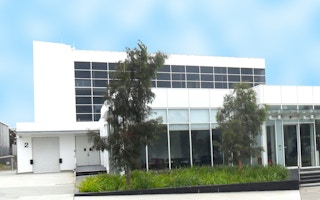Fujitsu has clinched the first energy rating for data centres in Australia, with its Noble Park Data Centre recently attaining a four-star certification from the National Australian Built Environment Rating System (NABERS).
The Noble Park Data Centre, located in Melbourne, was recognised for its energy efficiency and its reduced greenhouse gas emissions.
It produces 8,000 tonnes of carbon dioxide equivalent per year, said Lee Stewart, head of sustainability for Fujitsu Australia and New Zealand, who spoke to Eco-Business on the phone.
“Compared to the predicted usage of a similar three-star data centre, which would produce 10,000 tonnes CO2e annually, the four-star Fujitsu data centre is roughly 20 per cent more efficient,” he added.
This translates to better environmental performance and significant energy savings, which the NABERS certification programme is all about. According to the implementing agency, the Office of Environment and Heritage of the New South Wales government, the six-star scale NABERS rating serves to measure and indicate the environmental impact of buildings and other infrastructure.
Data centres, in particular, is an additional focus since the servers and IT equipment contained consume two to three billion kWh of electricity in Australia, based on 2006 to 2007 data, said OEH. This is equivalent to 1.5 per cent of Australia’s total energy consumption in a year.
“
By rating its facility with NABERS Energy for data centres, Fujitsu is demonstrating its commitment to sustainability and helping to make efficient centres the industry standard
Tom Grosskopf, NSW Office of Environment and Heritage Metropolitan branch director
The use of data centres will only continue to increase as more people demand internet connectivity, higher quality data, and mobile service, they explained.
Stewart noted that the Noble Park Data Centre caters to top-tier corporate and government clients. First built in 1988, the data centre was recently upgraded by the international Japanese ICT firm.
The new features and continuous fine-tuning helped the data centre garner its NABERS certification, he said.
Currently, it has “a chilled water system that allows the data centre to utilise free cooling, which does not use mechanical cooling like that of an air-conditioning”, he explained. The data centre also has heat reflective paint on the roof that helps control the internal and external temperature of the building, as well as central lighting and a building energy management system that monitors the power usage effectiveness.
These significant investments in the data centre infrastructure show customers the best practices Fujitsu has placed in its operations, noted Mike Foster, Fujitsu ANZ chief executive officer.
“We are pleased to be awarded a four-star NABERS rating, which is an excellent reflection of the focus we have placed on this important aspect of our business,” he said.
Data centres in the state of Victoria – where the Noble Park is – have the highest emissions compared to those in the rest of Australia, Stewart pointed out. This is not only due to the warm climate, but because most of the energy consumed comes from brown coal, he explained.
“Our key goal is to reduce emissions further by 2016, through the cooling load, constant monitoring of energy usage, consulting with clients on sustainability, which I do, and more.”
Tom Grosskopf, director of the Metropolitan Branch at the NSW OEH, called this “excellent news for the data centre industry, for businesses and for the environment”.
“By rating its facility with NABERS Energy for data centres, Fujitsu is demonstrating its commitment to sustainability and helping to make efficient centres the industry standard,” he added.

















